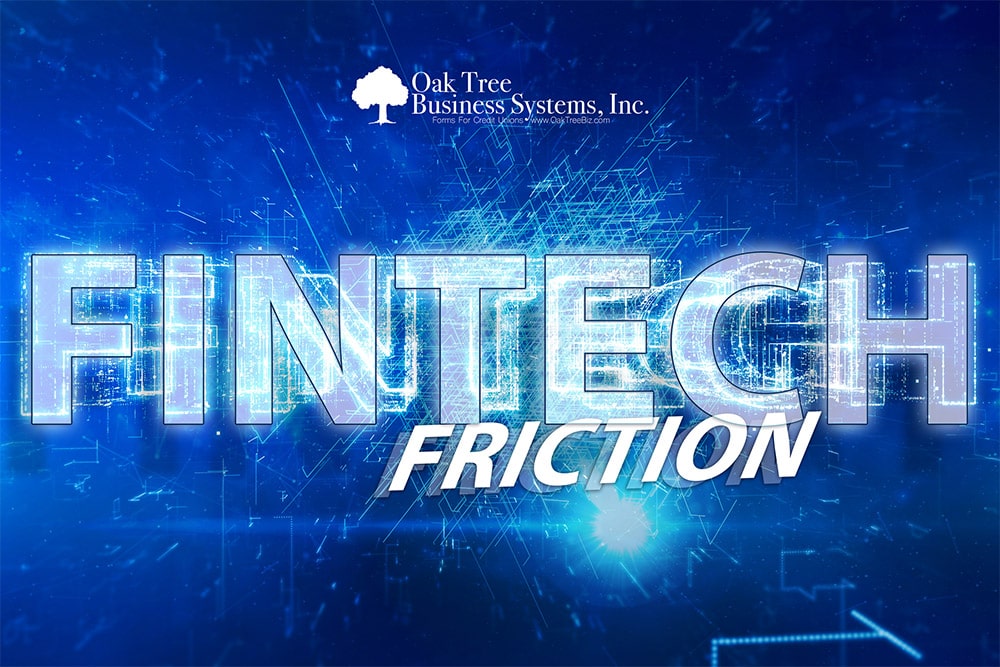
Originating in 1866, Fintech came about when the very first transatlantic cable was laid. From 1950-1990, five decades of financial technological developments came with having to do with credit cards, ATMs, trading, computers, and data systems. As years went on and technology started becoming more advanced, new developments came along to help banks stay up to date with the new changes. When systems are not planned it can create some fintech friction.
In today’s world, it is imperative to have a system that is up to date (made necessary by advancing technologies that are becoming easier for users to navigate), and a system with fewer clicks, known as a “3-click rule.” A huge consideration when taking on the role of making sure that everything is running smoothly is to ensure that the system is performing in a fast and efficient manner. When people are trying to browse through an application on their phones and the application is difficult to maneuver, they will likely get frustrated and click out of the app, or they may even delete it. We need to remember that today we tend to get impatient when an application or web browser takes more than a few seconds to load correctly. This has to do with how technology advancements are conditioning us to have “unrealistic” time-slot expectations.
A Forbes blog states, “Waiting doesn’t seem effortful, but it is still friction. Even a short wait may prevent the desired action. Waiting adds uncertainty and increases anxiety when the exact delay is unknown. Given an arrival window of “8 AM to 4 PM” for the cable repair person, how do you feel at 3 PM when they have yet to arrive?” Talking business, when customers are scrolling through their accounts or a forms document, they are expecting the process to be fast and easy. Our daily schedules are hectic, and if we have to spend 20 minutes on a forms application, then we may rethink the task we were planning on completing. Not only is having top-of-the-line technology important for your credit union, but it also allows your institution to provide easy access to all of the products and services you offer your members. Members are accessing apps with a certain goal in mind, or they could just be curious about the credit union. Making sure the app or website is efficient, clean, put together, and up to date will allow for great satisfaction and an awesome customer experience.
Looking deeper into this topic, there are many different mortgage companies supposedly “taking power” from other financial institutions. Whoever is in need of a loan should research to see which company provides the most benefit, who will pay more attention to each potential member walking through the business’s doors, and what goals are their members or potential members trying to achieve. Some things a financial institution needs to think about before a member applies for a loan: Is the loan process long? What kind of information will be requested? How will the credit union provide information (over the phone or in person)? All of these questions need to be thought through. Credit unions make the process easy, efficient, and fast. Staff members care about every single person who walks through the company’s doors. With a smaller pool of members than other financial institutions (due to field of membership requirements), customer service and customer satisfaction are a huge responsibility for every staff member. Providing the best loans for their members and having someone on the phone and in person to chat about any questions or concerns will always be a guarantee.
When it comes to banks and mortgage companies, their pool of members is very wide. This can and will result in not paying enough attention to each member’s needs, and the bank will try to get their money back from the loan as fast as possible. Interest rates are a major factor in getting their money back AND making a profit, [sic] “A “nonbank” can be seen as a financial intermediary. Instead of depositors, a nonbank gets its funds from investors, debt (via bond sales), or by borrowing from commercial banks. It takes that money and loans it to borrowers. The fees and interest collected — as well as principal repayments — are then used to repay the capital with interest.” The Simple Dollar
Oak Tree Business Systems, Inc. has been in the credit union industry for over 40 years. We have developed, supported, and maintained lending/operational documents for credit unions in over 50 states, including Puerto Rico and the Virgin Islands. Not only are we efficient, but we work with you to create forms that accommodate your credit union’s technology objectives and facilitate a smooth workflow. These documents are easy to use, are specifically designed to match your credit union’s policies and procedures and work hand in hand with your data/loan processing system. Our compliant forms and marketing services are at the top of the credit union game. Oak Tree wants your credit union to feel secure in the forms you provide your members, so please let us know how we can help! Let’s avoid the fintech friction.


